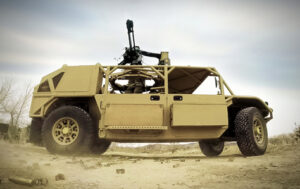
General Dynamics Flyer-72
You are reading the first of three in-depth stories on the future of US land forces and their new combat vehicles. In this first piece, Sydney details what the Army wants in its new air-droppable vehicles for the oft-outgunned light forces who are first to the fight. The next two stories will explore the Joint Light Tactical Vehicle (JLTV), the mine-resistant vehicle the Army and the Marines will buy 50,000 of, and the Armored Multi-Purpose Vehicle (AMPV), designed to replace the venerable M113 as the workhorse of the armored brigades. –The Editor
Later today, eight contractors — the full list is secret — will deliver their candidates for the Army’s new Light Reconnaissance Vehicle at Fort Benning, Ga.
A lightly armed and armored scout car, LRV is the second in a triad of technologically modest but tactically revolutionary Army projects so new they’re not officially even “programs” yet. The other two are a moderately well-armed and armored light tank, the Mobile Protected Firepower vehicle, and an unarmed, unarmored off-road troop transport, the Ultra-Light Combat Vehicle. (The Army is now renaming ULCV the Ground Mobility Vehicle).
In stark contrast to the heavily armed and armored M1 Abrams tank and M2 Bradley troop carrier, which must usually move to theater by ship, all three light vehicles will be air-droppable by parachute. On landing, the paratroops will mount up in their ULCVs, move out at high speed over rough terrain, and then dismount to make the final assault foot. Light Reconnaissance Vehicles will scout ahead and watch the flanks, while Mobile Protected Firepower vehicles blast anything too tough for the infantry’s own weapons.
If successful, the three vehicles will bring new mobility and firepower to the Army’s most rapidly deployable forces at a time when the service is struggling to show its relevance. If the programs are mishandled, however, the vehicles will weigh down the light infantry with their need for fuel and maintenance. They might even put troops in greater danger than they would face on foot. Given the ugly history of Army procurement programs since at least 2002, when the Crusader howitzer was canceled for being too heavy, too expensive and too complex, the three lightweight vehicles will be a crucial test case for what the service says is a new and improved approach to acquisitions.
So what makes the stakes so high?
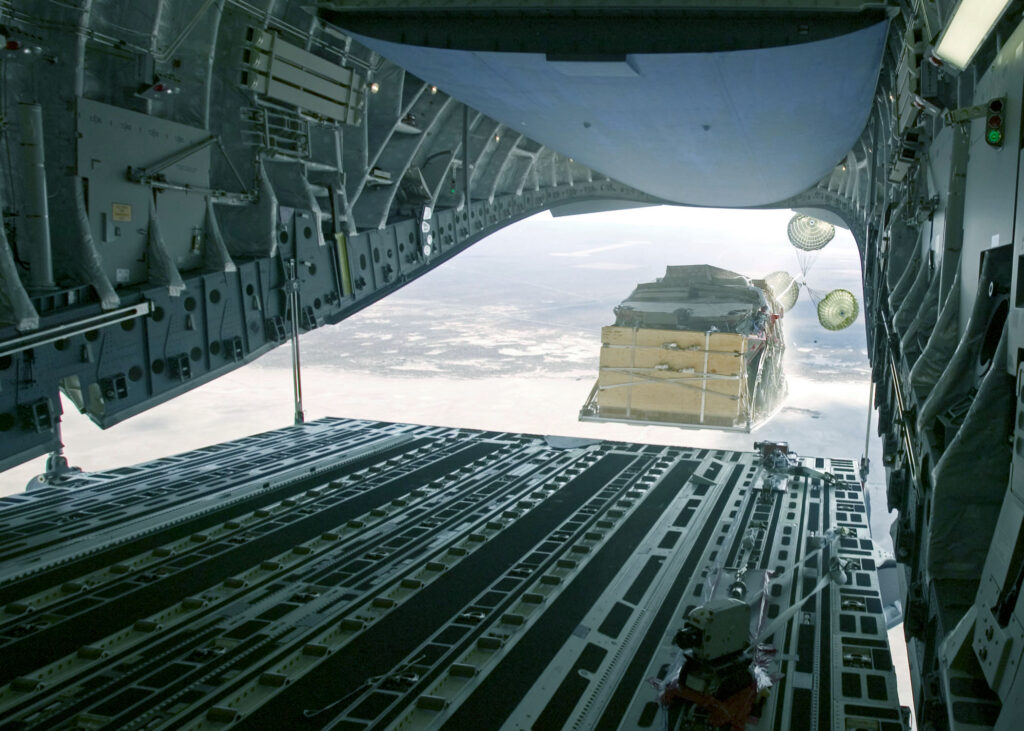
Airdropping an Army Stryker vehicle
Paratroops With Wheels
What the Army really wants is paratroopers with wheels. Today, airborne forces can fly anywhere on the planet within a day, but after landing they must move out on foot. That’s doable if they land close to their objective, but as anti-aircraft missiles grow more common and more powerful, non-stealthy transport planes and helicopters have to keep their distance. If Army ground forces want to remain relevant in the face of so-called “anti-access/area denial” defenses, they have to be able to land outside the no-fly zone and still reach their target.
For paratroops on foot, “the farthest I could land is seven to 10 miles away,” said Lt. Col. Kevin Parker, who heads light vehicle requirements at Fort Benning. Even that distance is challenging to cross if you have to parachute in at night, regroup scattered soldiers, and hoof it to the target before daylight reveals you to the enemy. But if you also airdrop light vehicles, he said, “they give you the capability, which we don’t have now, of landing 40 miles away — nowhere near the objective — and then I move to that objective and assault it still under the cover of night.”
Then, Parker said, once the objective is taken, the infantry can get back in their vehicles and move out to do it again.
But the fragility of this proposed force worries some experts. The Army’s heavy forces are heavy for a reason, armor, which allows them to move forward under enemy fire. The great modern example is the famous Thunder Runs through downtown Baghdad in 2003. Light infantry, by contrast, survives by spreading out and digging in. While any individual infantryman is appallingly mortal, infantrymen in the right terrain can be as ineradicable as cockroaches: Consider the Germans at Monte Cassino or the Russians at Stalingrad. If you pack nine men into an unarmored vehicle like the ULCV, however, a single grenade, roadside bomb, or machinegun burst can kill them all in an instant.
“We go through this every so often, trying to get the light formations more mobile,” said one former congressional staffer who’s skeptical of the new vehicles. “They’re going to deploy with it and start hitting IEDs, and guys are going to get hurt.” Then it’ll be Iraq all over again, with a shocked public and a furious Congress pushing the Army to uparmor the vehicles.
“If you need to move a squad armored, we have that [already],” Lt. Col. Parker countered. “That’s what an MRAP is.” But you can’t drop a Mine-Resistant Ambush-Protected vehicle by parachute, sling-load it under a helicopter, or, for that matter, drive it at high speed over rough terrain as the ULCV is supposed to do.
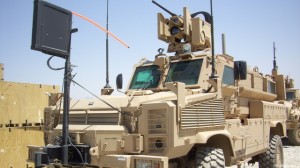
MRAP vehicle
“MRAP is a mobility option. Helicopter is a mobility option. Being air-delivered by a parachute is a mobility option,” Parker continued. But today, once you arrive by helicopter or parachute, you’re on foot: “What I don’t have is the mobility option between foot and MRAP.”
Parker very much means “option” in the sense of “optional.” Some missions are still best done on foot. In fact, the ULCV won’t be standard-issue equipment for light infantry units. It will be special issue and must be requested from motor pools for specific missions or deployments, much the way the MRAPs are now.
“I’m not putting hundreds of vehicles into every brigade,” Parker said. Giving every squad a ULCV would require more mechanics, fuel trucks, and so on than a light brigade can muster, he said. On the other hand, he said, “if I have a battalion’s worth in a brigade, I can probably sustain that with what we have now.”
The Light Reconnaissance Vehicle, by contrast, will be standard issue in every light brigade. That will actually reduce the number and weight of vehicles in the unit. The LRVs will be replacing a larger number of heavier machines, specifically the uparmored Humvees that currently fill the scout role but lack the cross-country mobility or the troop-carrying capacity of the LRV. Transporting a platoon of 36 scouts takes nine Humvees but only six LRVs, which means fewer troops are tied up operating vehicles and unavailable to fight on foot.
A light brigade can benefit from high-speed off-road scouts whether the rest of the force is moving on foot or not. But it’s when the infantry mount up in their ULCVs that the Light Reconnaissance Vehicles become especially crucial.
The unarmored transports must not drive into enemy fire. To do so would recreate 1854’s notorious “Charge of the Light Brigade” when unarmored British cavalry rode into the teeth of Russian cannon. Because infantry survive by hitting the dirt, they need to dismount their vehicles before they attack the objective — or before they run into an ambush. It’s the LRVs’ job to range ahead and find the enemy before he can rip apart the vulnerable troop trucks.
“I’ve got to be able to detect any potential threats and defeat them before they have the ability to engage,” Parker said. Once the scout cars spot the enemy, the best solution will often be to go around, exploiting the light vehicles’ off-road mobility. But sometimes battle is unavoidable. This is where the Mobile Protected Firepower vehicle comes in.
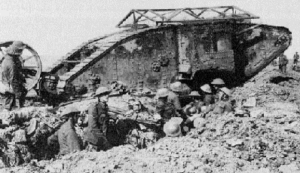 “It really gets back to why we invented the tank in World War I,” Parker told me. By 1916, dug-in machineguns kept infantry pinned down in their trenches and made assaults suicidal. But the first crude tanks could shrug off machinegun fire with their armor and destroy machinegun nests with their cannon, giving friendly infantry a fighting chance to advance. The Mobile Protected Firepower vehicle is an agile 21st century take on the same concept.
“It really gets back to why we invented the tank in World War I,” Parker told me. By 1916, dug-in machineguns kept infantry pinned down in their trenches and made assaults suicidal. But the first crude tanks could shrug off machinegun fire with their armor and destroy machinegun nests with their cannon, giving friendly infantry a fighting chance to advance. The Mobile Protected Firepower vehicle is an agile 21st century take on the same concept.
“It’s an infantry support vehicle,” Parker said of the MPF. “Your most likely targets are those enemies that are behind walls, in bunkers, in fortified positions, [or] lightly armored vehicles.” Enemy main battle tanks or densely defensed urban areas are better left to the massive M1 Abrams, he said, not the light-tank-like MPF vehicle. “It doesn’t have the armor to lead the charge on something like the Thunder Run.”
Even so the MPF will be the hardest of the three vehicles to build. The Army has struggled since World War II to build a light tank that’s light enough for rapid deployment, but not too light to survive. But even the ULCV troop truck and the LRV scout car pose challenges for a chronically underperforming acquisition system.
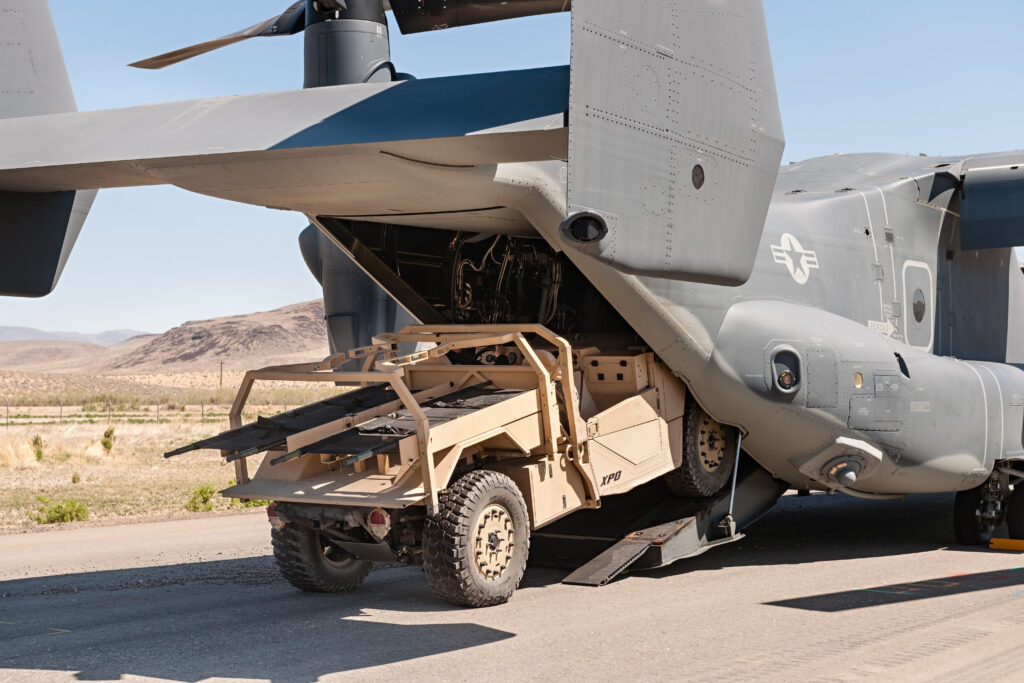
A Boeing Phantom Badger loads onto a V-22.
Building It Better
Think building light trucks is easy? Think again.
“Quite frankly, no one had ever asked for a vehicle that’s under 4,500 pounds, so it can be lifted by a UH-60 [helicopter], any model, under high-hot conditions [i.e. high altitude, hot weather], that can also carry a payload of 3,200 pounds, [i.e.] nine combat-loaded soldiers,” Lt. Col. Parker told me. “A bunch of people thought, ‘you can’t make that vehicle. We don’t have the industry capability to make that.'”

A UH-60 carries a sling-loaded Humvee
So, in a remarkable reversal of time-honored practice, the Army actually asked companies to show it the vehicles they already had before it wrote the formal “requirements” for what the Army needed. Last June, vendors put vehicles through their paces in a Platform Performance Demonstration” (PPD) at Fort Bragg, home of the 82nd Airborne. Only after seeing that their vision was feasible did Training and Doctrine Command officers like Parker finalize the requirements documents.
That seems like common sense, but historically TRADOC has shown an unfortunate tendency to write unrealistic requirements and do it “in a vacuum,” Parker said. “[You] put a bunch of requirements together, run them through simulation, validate that, ‘oh yeah this vehicle is awesome’… only to discover that industry can’t deliver, [at least] at a price point you can afford.”
(While Parker wouldn’t name names, the worst example in this century was the Future Combat System, whose requirements assumed technology breakthroughs in robotics, defenses, and networking would all materialize on a tight schedule).
It’s not only industry that TRADOC tends not to consult. It’s also the other parts of the notoriously tribal Army, such as combat units and the acquisition corps. On the Ultra-Light Combat Vehicle, by contrast, “we’ve been heavily involved with the 82nd since the summer of 2013,” Parker said. 82nd Airborne Division soldiers provided most of the manpower for last June’s tests at Bragg.
Also on hand were technical experts from Army’s research, development, and engineering centers — the “DECs” — for Tank & Automotive systems (TARDEC), Communications & Electronics (CERDEC), Armaments (ARDEC), and Aviation & Missiles (AMRDEC). There were even participants from the Army Test & Evaluation Command (ATEC), who are normally kept at arm’s length until a program is as ready as possible.
Parker and his staff reached out for help not only with the demo at Bragg but throughout the whole process of drafting and revising the requirements. As a result, he’s confident that “the requirements we’ve put in the document can be achieved,” Parker said. “When it gets to a program manager, he’s not going to have to make a lot of trades because we’ve done our homework up front.”
The Ultra-Light Combat Vehicle is now well on its way to becoming a formal program. In the process, the Army is changing the name to Ground Mobility Vehicle. (This is even more confusing than it sounds, because the Special Operations Command already has something it calls a Ground Mobility Vehicle, the General Dynamics Flyer, and GD is offering a variant of the Flyer for the ULCV/GMV).
The Army is now repeating this process for the Light Reconnaissance Vehicle. What’s happening today at Fort Benning is simply a safety inspection. In early August, once the competitors have had a chance to address any Army safety concerns, the LRV candidates will go through a product performance demonstration at Benning, much like the UCLV PPD last summer at Bragg.
In fact, at least two of the prospective LRVs — from tiny Vyper Adamas and giant General Dynamics — will be different configurations of vehicles already offered for ULCV. The Light Reconnaissance Vehicle has different draft requirements than the unarmed and unarmored Ultra-Light Combat Vehicle: LRV needs to mount a M230 chaingun, a Long-Range Advanced Scout Sensor System (LRASSS), and enough armor protection to stop small arms and shrapnel. But the LRV only has to carry six soldiers, as opposed to the ULCV’s nine, which frees up a lot of weight for the weapons, sensors, and armor.
“It doesn’t take a great deal of effort to reconfigure the vehicle for either [the Special Operations] GMV 1.1, ULCV, or LRV,” said General Dynamics’s program manager, Sean Ridley. “You’re just bolting on different kits.”
“It takes about 10 to 15 minutes” to reconfigure a ULCV into an LRV or vice versa, claimed Vyper Adamas president Shane Sterling. That opens up the cost-efficient and tactically intriguing possibility that the ULCV and LRV don’t have to be different vehicles, just different configurations for different missions.
The Mobile Protected Firepower vehicle, by contrast, is a very different — and very nascent — animal. So far there’s just an Initial Capabilities Document that’s made it through the Army’s internal review and has started through the Joint requirements process. “We think it has a very strong chance of becoming a program,” Parker said. If it does, the next step will not be a demonstration but a formal Analysis Of Alternatives. That AOA will see whether a new design is necessary or whether something already in production — in Europe, for example — might fit the bill.
“I don’t know of a system that is ready to go out there that could meet the MPF requirement, but there are some that might be able to be modified to do it,” Parker said. He emphatically declined to give specifics or even generalities, deferring to the AOA.
One industry source, however, has told me the Army’s briefing slides consistently feature the old Sheridan light tank and suggest something similar for MPF. That means a tracked vehicle with a manned turret, rather than a wheeled vehicle with turret remotely controlled from inside the hull, as on the much-criticized Stryker Mobile Gun System (MGS).
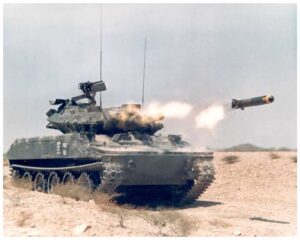
The M551 Sheridan, retired in the 1990s, which the Mobile Protected Firepower vehicle will replace.
“I am not going to disparage the Mobile Gun System,” Parker said, “but I think the capability that MPF is intended to provide will be a better option for the Stryker brigade.” That would be in addition to the MPF vehicles in light infantry units.
For all the MPF’s ambition, Parker is emphatic that it does not require any new technology. The necessary modifications to currently available vehicles, he said, are upgrading suspensions to withstand a parachute landing and redesigning the hull slightly to fit into US aircraft.
As for the ULCV and LRV, the candidates are all currently available vehicles very similar to light trucks used by Special Operations Command. In fact, at least two ULCV contenders, the General Dynamics Flyer and the Polaris DAGOR, already are service with SOCOM.
These are “modest modernization programs,” said Atlantic Council senior fellow James Hasik. “Is there anything wrong with that?” he asks rhetorically. “I don’t think that the rate of advance in the technologies of ground vehicles is moving so fast that the Army could aim for a great leap forward.”
“Anything overreaching will be doomed to failure. But this portfolio is clearly not another FCS [Future Combat System],” Hasik believes. Even the Army’s main modernization effort for its heavy forces, the Armored Multi-Purpose Vehicle, is essentially an upgraded variant of the reliable old Bradley. (We’ll discuss that later in the series). In a time when budgets are tight and the future is unclear, a little modesty is a big virtue.
Sullivan: Defense industry ‘still underestimating’ global need for munitions
National Security Advisor Jake Sullivan said that there are “no plans” for another Ukraine supplemental at this point.


























